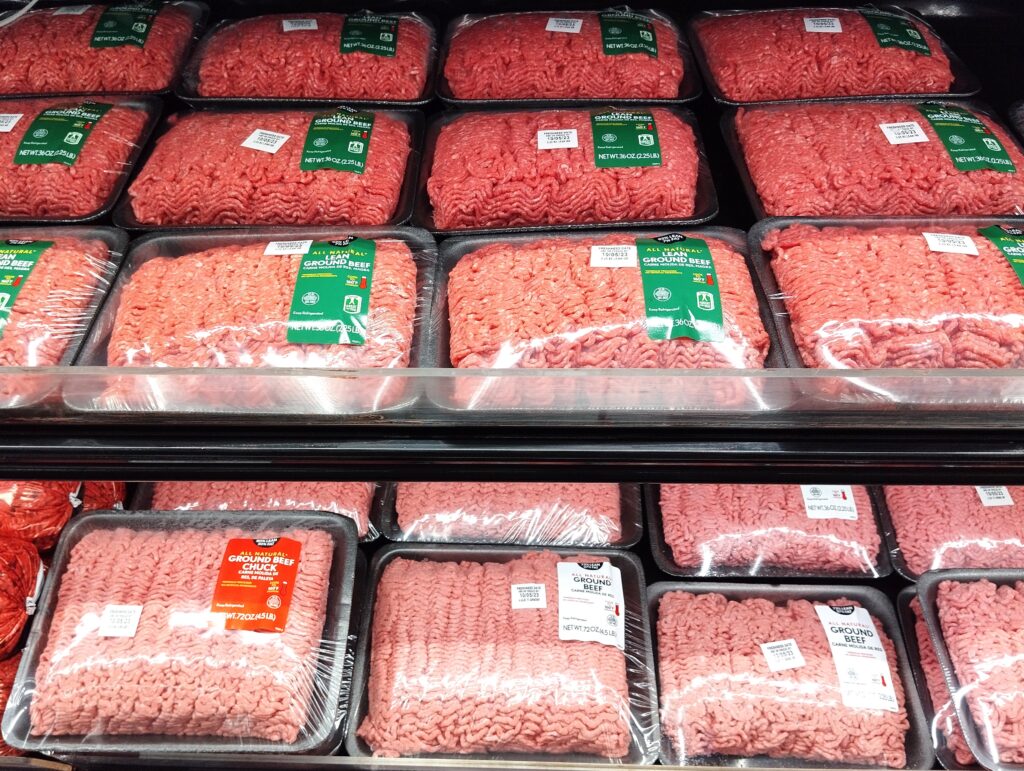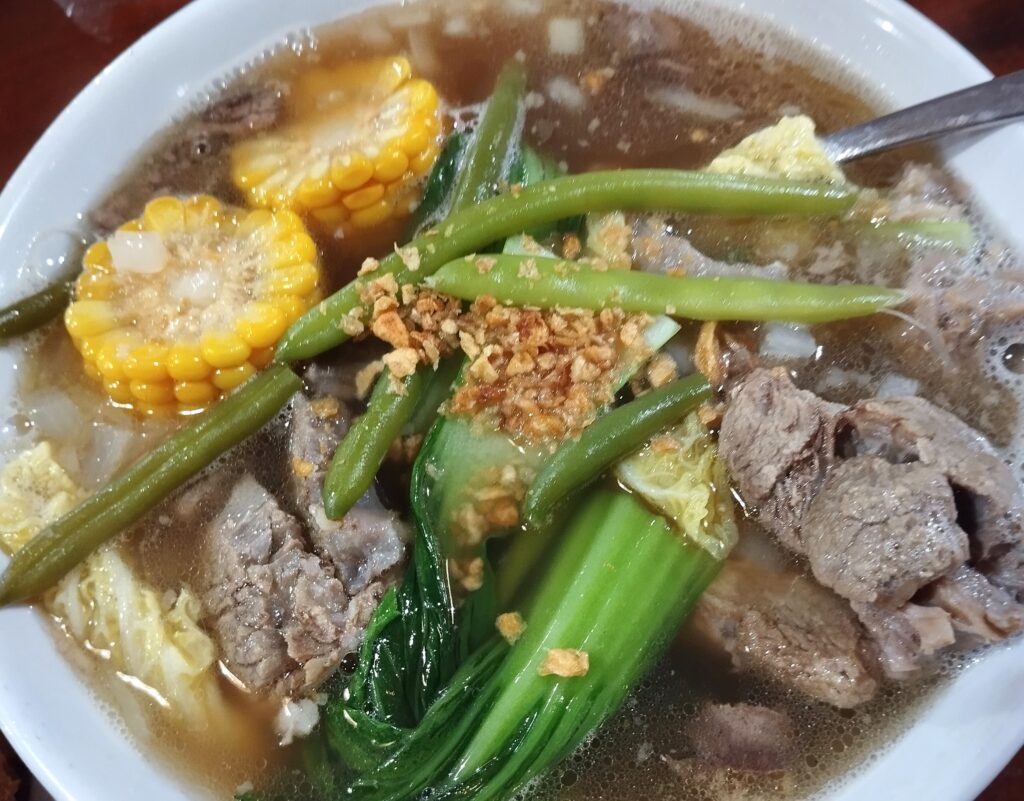Text and Photos by Henrylito D. Tacio
It’s a fact: Filipinos love to eat meat. “The Philippines is one of the fastest growing meat eaters in the world,” Jamie Plotnek, Carbon Trust corporate communications manager, told Philippine Daily Inquirer. “
Based on projected consumption increases from Food and Agricultural Policy Research Institute-Iowa State University on the top 10 of the fastest growing meat consuming nations, the Philippines has one of the highest continuing growth rates.
Data reviewed by Rappler from the Organization for Economic Cooperation and Development said a Filipino consumes about 14.2 kilograms of pork, two kilograms more than the world’s average pork consumption.
After pork, the average Filipino consumes about 11.6 kilograms of chicken and 3 kilograms of beef or veal. All in all, a Filipino consumes about 28.8 kilograms of meat annually.
According to Science and Technology balik scientist Custer Deocaris, the Philippines imports most of its meat. “We are the most hungry in terms of meat,” he pointed out. “We basically import a lot of meat. Eighty percent of the pork we eat are imported.”
When it comes to meat, Filipinos readily gobble it. They don’t care whether it is red meat or white meat. As long as it is meat. “Pork, beef, chicken – all provide the iron I need for my body,” commented Janoz S. Laquihon, a veterinarian.
People have been eating meat throughout evolution and have a digestive system well equipped to handle it. These days, however, experts divide meats into two types: red or white.
The United States Department of Agriculture classifies all meats obtained from mammals (pork, beef, veal, mutton, venison, and lamb) as red meats because they contain more myoglobin than fish. Myoglobin is a protein found in meat that produces a red color when it’s exposed to oxygen.
In culinary terms, white meat is meat which is pale in color before and after cooking. In nutritional studies, white meat includes poultry and fish, but excludes all mammal flesh. Some types of fish, such as tuna, are red when raw and turn white when cooked.
But why is there a division of meats? “The meat consumed today is different from the meat people ate in the past,” healthline.com’s Kris Gunnars surmised. “Back in the day, animals roamed free and ate grass, insects or other foods natural to them. Picture a wild cow on a field 10,000 years ago, roaming free and chewing on grass and various other edible plants. The meat from this animal is different from the meat derived from a cow that was born and raised in a factory, fed grain-based feed and given growth-promoting hormones and antibiotics.”
It’s no wonder why red meat has been equated with various health problems and diseases. Before probing deeper, let’s take a closer look at meat’s nutrient contents.
A 100-gram portion of raw ground beef (with 10% fat) contains vitamin B3 (niacin), vitamin B12 (cobalamin), vitamin B6 (pyridoxine), and selenium. It has plenty of other vitamins and minerals in smaller amounts. In addition, red meat is also rich in important nutrients like creatine and carnosine.
The two most important nutrients from red meat are iron and zinc. Iron is needed to help red blood cells transport oxygen. Iron deficiencies are more likely to occur in children, elderly people and pregnant women. Iron is also available from dark green leafy vegetables, beans and grains, but is best absorbed by the body from red meat.
Zinc is required by the body for DNA synthesis and helps the immune system to function effectively. It is also found in fish, grains, eggs and beans, but zinc is best absorbed from red meat and fish sources.
Dangers of red meat
“The effects of red meat on health have been well studied,” Gunnars wrote. “However, most of these studies are so-called observational studies, which are designed to detect associations but cannot prove causation.”
Several studies show that red meat is associated with a greater risk of cancer. In fact, the International Agency for Research on Cancer (IARC) concluded in 2015 that red meat is “probably carcinogenic to humans.”
The main type of cancer that red meat is believed to cause is colorectal cancer (CRC). In 2017, data from the Philippine Society of Gastroenterology showed “over 3,000 new cases of CRC among Filipinos annually” (with over 2,000 deaths “based only on reported cases”). The Global Cancer Observatory, however, reported in 2020 that the number of CRC has increased considerably to 17,364 cases per year.
Other studies showed that there is also a higher risk of pancreatic and prostate cancer in those who ate red meat.

Heart disease
Consumption of red meat has also been linked with increased incidences of heart disease. “For years, experts have believed that the link between red meat consumption and heart disease is due to the saturated fat that is present in red meat,” writes Medical News Today’s Jennifer Berry.
Generally, red meats have more saturated fat than other sources of protein such as chicken, fish, or legumes, according to the American Heart Association. Eating high amounts of saturated fat and any amount of trans fat, they contend, can raise a person’s cholesterol levels and increase their risk of heart disease.
But some studies have questioned the notion that saturated fat has links with heart disease. “The authors of a review of heart disease risk state that researchers have exaggerated the role of saturated fat in the development of heart disease,” writes Berry.

In addition, there’s a team of cardiologists debunking the idea that consumption of saturated fat can clog the arteries or increase the risk of heart disease. “All things considered, there is evidence both for and against saturated fats playing a role in heart disease,” Berry writes. “Research is ongoing.”
Type 2 diabetes
Many different studies have also suggested that eating red meat regularly can lead to a higher risk of diabetes. A study done by Harvard University in 2011 made news headlines when it published the result suggesting that eating unprocessed meat was associated with an increased risk of type 2 diabetes.
The risk of diabetes was 20% higher in those that ate over 100 grams of unprocessed red meat a day. But the study was panned for including hamburgers within the unprocessed foods list. Of those that ate a serving of processed meat, the risk of type 2 diabetes grew 50% higher.
Red meats which are processed include meat products that have been cured, pre-cooked, comminuted or had preservatives and binding ingredients added. Examples include hams, bacon, bologna, hotdogs, sausages, burgers, corned beef, salami, and jerky.
Kidney failure
Diabetes and hypertension are among the most common causes of kidney failure but a study published in the Journal of the American Society of Nephrology suggested that red meat intake might be a risk factor, too.

The study reported a dose-dependent link between red meat consumption and risk of kidney failure, reports the Medical News Today. Participants who were in the highest 25% of red meat intake, for instance, were found to have a 40% increased risk of kidney failure, compared with those in the lowest 25%.

Dr. Woon-Puay Koh, of the Duke-NUS Medical School in Singapore, who was study co-author, wrote: “Our findings suggest that these individuals can still maintain protein intake but consider switching to plant-based sources; however, if they still choose to eat meat, fish/shellfish and poultry are better alternatives to red meat.” – ###








